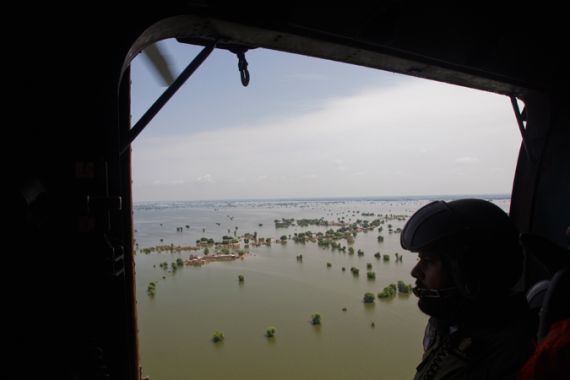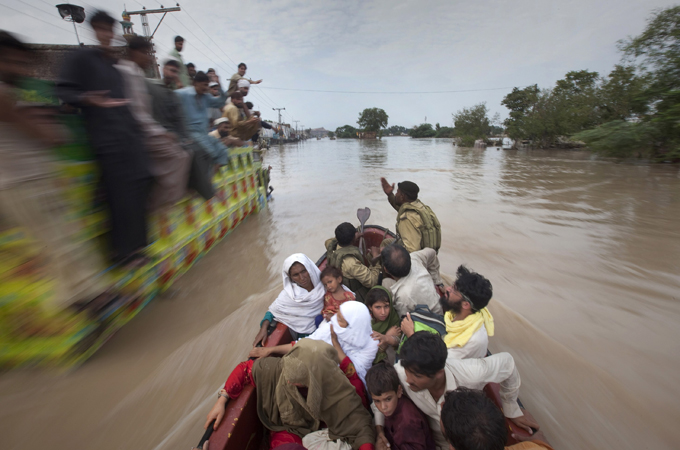Pakistan: A flood of misery
Disaster leaves millions displaced, crippling a country already under economic and security stress, coming in at No. 5.

 |
| Government relief efforts struggled to meet the needs of the 20m displaced by the disaster [Reuters] |
For a country many see as being perched on a precipice, the floods of 2010 could not have come at a worse time. Battling an insurgency at home, while lurching from one economic or political crisis to another, Pakistan’s stability was balanced on a knife-edge in July 2010, when the first drops of the monsoon rains began to fall.
The rains did not cease until September; by the time the record flooding was over, the Pakistani government said that over 20 million people (11 per cent of the population) had been directly affected.
Keep reading
list of 4 itemsPhotos: Athens turns orange under North Africa’s Sahara dust clouds
Turtles swimming to extinction in Malaysia as male hatchlings feel heat
Could shipping containers be the answer to Ghana’s housing crisis?
The waters washed away lives, infrastructure and livelihoods, destroying property and vast swathes of agricultural landthat the Pakistani economy depends upon for its very survival.
It was a disaster that UN Secretary-General Ban Ki-Moon said was the worst he had ever seen.
The numbers were, quite simply, staggering.
Seventeen million acres (69,000 square-km) of crop land submerged. Over 200,000 cattle and livestock drowned. Agricultural damage to an estimated $2.9bn, with overall damage estimated at $43bn, more than 25% of Pakistan’s gross domestic product.
Whole villages were simply wiped off the map.
Cotton, rice and sugarcane crops were completely ruined, and the World Food Programme reported in September that 70 per cent of Pakistanis did not have access to adequate nutrition.
The international aid response, however, was sluggish, particularly for a natural disaster that affected more people than the 2004 Indian Ocean tsunami, the 2005 Kashmir earthquake and the 2010 Haiti earthquake combined.
This was its own story: donor fatigue was exacerbated by serious concerns over the government’s ability to deliver aid to those who needed it most, leading to delays or a lack of funds to tackle the most basic health and rescue projects.
The UN’s Ban-Ki Moon initially asked for $460m in emergency relief aid, but only 20 per cent of this had been delivered by August 15, more than a month after the first floods were reported.
In a country frequently divided by ethnic or religious tensions, citizens down the length of the Indus were, this time, united in suffering.
Tensions rose as frustration with government relief efforts led affectees in some areas to riot.
Allegations were raised against wealthy landowners in the Sindh province, accusing them of protecting their own properties at the expense of the poorer farming villages.
Meanwhile, international commentary on the crisis often focused on the radical militant groups that stepped in to deliver aid where the government was unable, or unwilling, to do so. Flood relief efforts were viewed in light of security concerns and were hence hampered, hindering the plight of the flood’s victims.
And the disaster in Pakistan is not over.
Many of the 20 million people displaced remain unable to return to their homes.
While some floodwaters dried up in September, they left bare husks of the lives these millions had left behind. With their homes, crops and animals washed away, they return to start their lives from scratch.